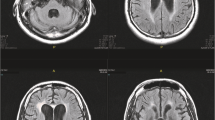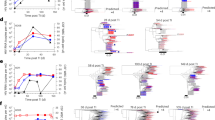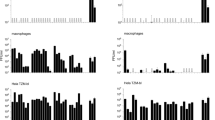Abstract
Despite the fact that the survival of people infected with human immunodeficiency virus (HIV) has improved worldwide because of the increasingly powerful and highly active antiretroviral therapy, opportunistic infections (OIs) of the central nervous system (CNS) remain a serious burden. HIV-1 is capable of entering the CNS through infected peripheral monocytes, but its effect on OIs of CNS remains unclear. In this study, we investigated the characteristics of HIV-1 in acquired immunodeficiency syndrome (AIDS) patients with CNS OIs. A total of 24 patients with CNS OIs and 16 non-CNS OIs (control) cases were selected. These AIDS patients were infected with HIV-1 by paid blood donors in China. HIV-1 loads in plasma and cerebrospinal fluid (CSF) were detected using RT-PCR, and the C2-V5 region of HIV-1 envelope gene was amplified from viral quasispecies isolated from CSF using nested PCR. The CSF HIV-1 load of CNS OIs was higher than that of non-CNS OIs, but plasma HIV-1 load of CNS OIs was not higher than that of non-CNS OIs. The nucleotide sequence of C2-V5 region of the HIV-1 quasispecies isolated from the CSF of CNS OIs had a high diversity, and the HIV-1 quasispecies isolated from the CSF of CNS OIs revealed R5 tropism as 11/25 charge rule. These results suggest that high levels of divergent HIV-1 quasispecies in the CNS probably contribute to opportunistic infections.



Similar content being viewed by others
References
Bachis A, Biggio F, Major EO, Mocchetti I (2009) M- and T-tropic HIVs promote apoptosis in rat neurons. J Neuroimmune Pharmacol 4:150–60
Borda JT, Alvarez X, Mohan M, Hasegawa A, Bernardino A, Jean S, Aye P, Lackner AA (2008) CD163, a marker of perivascular macrophages, is up-regulated by microglia in simian immunodeficiency virus encephalitis after haptoglobin-hemoglobin complex stimulation and is suggestive of breakdown of the blood–brain barrier. Am J Pathol 172:725–37
Christo PP, Greco DB, Aleixo AW, Livramento JA (2005) HIV-1 RNA levels in cerebrospinal fluid and plasma and their correlation with opportunistic neurological diseases in a Brazilian AIDS reference hospital. Arq Neuropsiquiatr 63:907–13
Christo PP, Greco DB, Aleixo AW, Livramento JA (2007) Factors influencing cerebrospinal fluid and plasma HIV-1 RNA detection rate in patients with and without opportunistic neurological disease during the HAART era. BMC Infect Dis 7:147
Christo PP, Vilela Mde C, Bretas TL, Domingues RB, Greco DB, Livramento JA, Teixeira AL (2009) Cerebrospinal fluid levels of chemokines in HIV infected patients with and without opportunistic infection of the central nervous system. J Neurol Sci 287:79–83
Chun H, Hao W, Honghai Z, Ning L, Yasong W, Chen D (2009) CCL3L1 prevents gp120-induced neuron death via the CREB cell signaling pathway. Brain Res 1257:75–88
COHERE (2012) CD4 cell count and the risk of AIDS or death in HIV-infected adults on combination antiretroviral therapy with a suppressed viral load: a longitudinal cohort study from COHERE. PLoS Med 9:e1001194
Ginhoux F, Greter M, Leboeuf M, Nandi S, See P, Gokhan S, Mehler MF, Conway SJ, Ng LG, Stanley ER, Samokhvalov IM, Merad M (2010) Fate mapping analysis reveals that adult microglia derive from primitive macrophages. Science 330:841–5
Goodenow MM, Collman RG (2006) HIV-1 coreceptor preference is distinct from target cell tropism: a dual-parameter nomenclature to define viral phenotypes. J Leukoc Biol 80:965–72
Haase AT (1986) Pathogenesis of lentivirus infections. Nature 322:130–6
Jensen MA, van 't Wout AB (2003) Predicting HIV-1 coreceptor usage with sequence analysis. AIDS Rev 5:104–12
Kaplan JE, Benson C, Holmes KH, Brooks JT, Pau A, Masur H (2009) Guidelines for prevention and treatment of opportunistic infections in HIV-infected adults and adolescents: recommendations from CDC, the National Institutes of Health, and the HIV Medicine Association of the Infectious Diseases Society of America. MMWR Recomm Rep 58: 1–207; quiz CE1-4.
Kim WK, Alvarez X, Fisher J, Bronfin B, Westmoreland S, McLaurin J, Williams K (2006) CD163 identifies perivascular macrophages in normal and viral encephalitic brains and potential precursors to perivascular macrophages in blood. Am J Pathol 168:822–34
Liu L, Zhao Q, Wei F, Yuan L, Zhang Y, Qiao L, Shi Y, Li N, Chen D (2012) Genetic analysis of HIV type 1 env gene in cerebrospinal fluid and plasma of infected Chinese paid blood donors. AIDS Res Hum Retroviruses 28:106–9
Martin C, Albert J, Hansson P, Pehrsson P, Link H, Sonnerborg A (1998) Cerebrospinal fluid mononuclear cell counts influence CSF HIV-1 RNA levels. J Acquir Immune Defic Syndr Hum Retrovirol 17:214–9
Masur H, Kaplan JE (2009) New guidelines for the management of HIV-related opportunistic infections. JAMA 301:2378–80
Mocroft AJ, Lundgren JD, D'Armino Monforte A, Ledergerber B, Barton SE, Vella S, Katlama C, Gerstoft J, Pedersen C, Phillips AN (1997) Survival of AIDS patients according to type of AIDS-defining event. The AIDS in Europe Study Group. Int J Epidemiol 26:400–7
Perry VH, Nicoll JA, Holmes C (2010) Microglia in neurodegenerative disease. Nat Rev Neurol 6:193–201
Riveiro-Barciela M, Falco V, Burgos J, Curran A, Van den Eynde E, Navarro J, Villar Del Saz S, Ocana I, Ribera E, Crespo M, Pahissa A (2013) Neurological opportunistic infections and neurological immune reconstitution syndrome: impact of one decade of highly active antiretroviral treatment in a tertiary hospital. HIV Med 14:21–30
Saitoh A, Fenton T, Alvero C, Fletcher CV, Spector SA (2007) Impact of nucleoside reverse transcriptase inhibitors on mitochondria in human immunodeficiency virus type 1-infected children receiving highly active antiretroviral therapy. Antimicrob Agents Chemother 51:4236–42
Soulas C, Conerly C, Kim WK, Burdo TH, Alvarez X, Lackner AA, Williams KC (2011) Recently infiltrating MAC387(+) monocytes/macrophages a third macrophage population involved in SIV and HIV encephalitic lesion formation. Am J Pathol 178:2121–35
Soulas C, Donahue RE, Dunbar CE, Persons DA, Alvarez X, Williams KC (2009) Genetically modified CD34+ hematopoietic stem cells contribute to turnover of brain perivascular macrophages in long-term repopulated primates. Am J Pathol 174:1808–17
Soulie C, Fourati S, Lambert-Niclot S, Tubiana R, Canestri A, Girard PM, Katlama C, Morand-Joubert L, Calvez V, Marcelin AG (2010) HIV genetic diversity between plasma and cerebrospinal fluid in patients with HIV encephalitis. AIDS 24:2412–4
Spudich S, Gonzalez-Scarano F (2012) HIV-1-related central nervous system disease: current issues in pathogenesis, diagnosis, and treatment. Cold Spring Harb Perspect Med 2:a007120
Tan IL, Smith BR, von Geldern G, Mateen FJ, McArthur JC (2012) HIV-associated opportunistic infections of the CNS. Lancet Neurol 11:605–17
van Marle G, Power C (2005) Human immunodeficiency virus type 1 genetic diversity in the nervous system: evolutionary epiphenomenon or disease determinant? J Neurovirol 11:107–28
Wei F, Wang X, Liu L, Gao R, Shi Y, Zhang Y, Qiao L, Chen D (2011) Characterization of HIV type 1 env gene in cerebrospinal fluid and blood of infected Chinese patients. AIDS Res Hum Retroviruses 27:793–6
Wu Z, Sun X, Sullivan SG, Detels R (2006) Public health. HIV testing in China Science 312:1475–6
Zhang Y, Qiao L, Ding W, Wei F, Zhao Q, Wang X, Shi Y, Li N, Smith D, Chen D (2012a) An initial screening for HIV-associated neurocognitive disorders of HIV-1 infected patients in China. J Neurovirol 18:120–6
Zhang Y, Wang M, Li H, Zhang H, Shi Y, Wei F, Liu D, Liu K, Chen D (2012b) Accumulation of nuclear and mitochondrial DNA damage in the frontal cortex cells of patients with HIV-associated neurocognitive disorders. Brain Res 1458:1–11
Acknowledgments
This work was supported by the Twelfth Key Science and Technology Five Year Plan of China (2012ZX10001-002, 2012ZX10001-003, and 2012ZX10001-004), National Natural Science Foundation of China (30910103915, 81272266, and 30870853), and Beijing Natural Science Foundation (7092045 and 7101005). We also appreciate the Chronic Disease Follow-up System of Beijing You'An Hospital (Beijing AIDS clinical data and sample database, D09050703560903).
Author information
Authors and Affiliations
Corresponding authors
Additional information
Yulin Zhang, Feili Wei, and Qi Liang contributed equally to this work.
Rights and permissions
About this article
Cite this article
Zhang, Y., Wei, F., Liang, Q. et al. High levels of divergent HIV-1 quasispecies in patients with neurological opportunistic infections in China. J. Neurovirol. 19, 359–366 (2013). https://doi.org/10.1007/s13365-013-0176-8
Received:
Revised:
Accepted:
Published:
Issue Date:
DOI: https://doi.org/10.1007/s13365-013-0176-8




